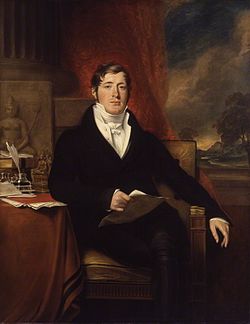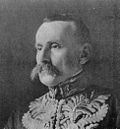| Chief Secretary of Singapore | |
|---|---|
 | |
| Style | The Honourable |
| Residence | Sri Temasek (1869–1959) |
| Appointer |
|
| Term length | No fixed term |
| Precursor |
|
| Formation | 1867 |
| First holder | Ronald MacPherson |
| Final holder | Edgeworth Beresford David |
| Abolished | 1959 |
The chief secretary of Singapore, known as the colonial secretary of Singapore before 1955, and the colonial secretary of the Straits Settlements before 1946, was a high ranking government official position in the Straits Settlements before 1946 and the Colony of Singapore after 1946, between 1867 and 1959. It was second only to the governor of Singapore, formerly the governor of the Straits Settlements in the colonial government.
Contents
- History
- Background of its creation
- Straits Settlements
- Evolution after World War II
- Major responsibilities and powers
- Career paths
- List of officeholders
- Colonial Secretary of the Straits Settlements (1867–1942)
- Colonial Secretary of Singapore (1946–1955)
- Chief Secretary of Singapore (1955–1959)
- See also
- References
- External links
- English-language
- Chinese-language
The Straits Settlements, which mainly comprised Singapore, Penang and Malacca, became a Crown colony in 1867. The position of Colonial Secretary was subsequently created with a view to replacing Resident Councillor in Singapore. During the Japanese occupation of Singapore, the position was vacant and suspended following the downfall of the Malay Peninsula into the hands of the Japanese Empire. In 1946, Singapore parted from Penang and Malacca, forming itself into a Crown colony, so the jurisdiction of Colonial Secretary was reduced to Singapore only.
The title "Colonial Secretary" was later changed to "Chief Secretary" in 1955 when the Crown colony adopted the Rendel Constitution. Having been in existence for 92 years, the position was abolished in 1959 after Singapore attained self-governance.
Being the head of the Colonial Secretary's Office, the colonial secretary was an ex-officio member of both the Executive and Legislative Council, and at the same time the head of the Colonial Secretariat between 1867 and 1955.
When Singapore adopted its new constitution in 1955, although the Colonial Secretariat was abolished, the chief secretary remained an ex-officio member of the Council of Ministers and the Legislative Assembly.
The workplace of Chief Secretary was located at Empress Place Building while Sri Temasek, which was next to the Government House, was the official residence of the chief secretary.

































